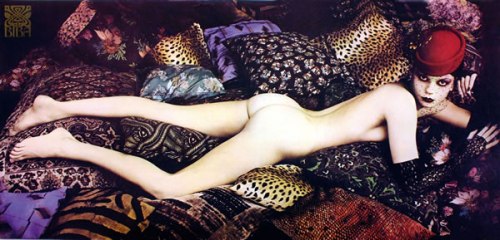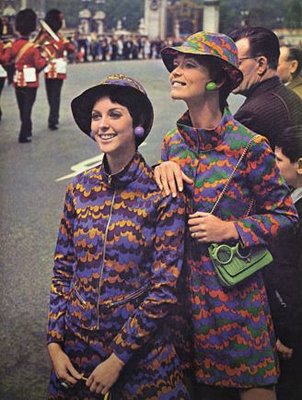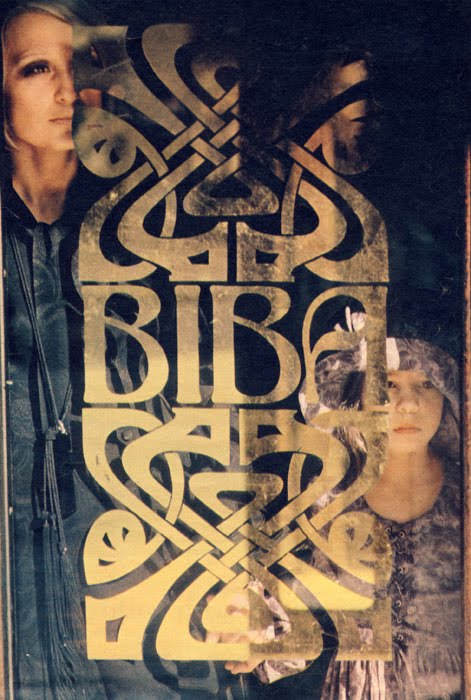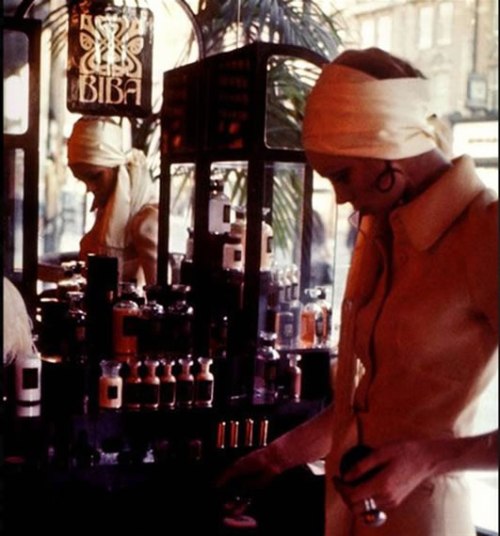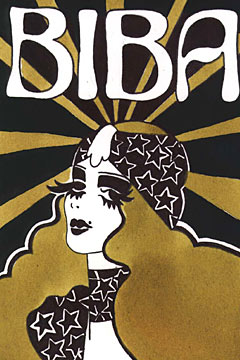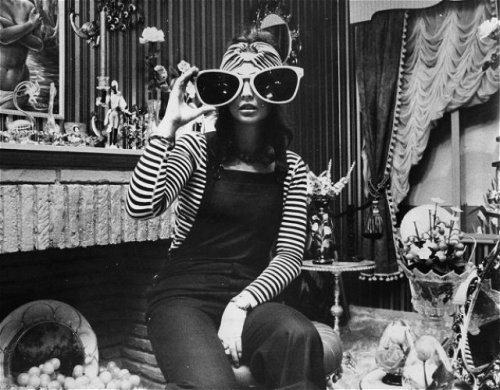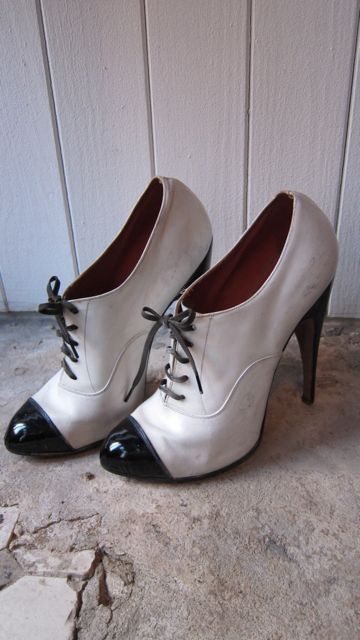This is the first in a series of posts about classic and iconic fashion brands of years gone by.
I have a special interest in Art Deco darling of the 60’s and 70’s, Biba. A recent vintage haul yielded an original black velvet Biba skirt – high-waisted, with covered buttons to one side of the waist and a scalloped hemline, embellished with metallic embroidery. When I saw the iconic logo on the label I gasped and then went and told as many people as I could find, trying to impress upon them the importance of this find. Vintage Biba is rare. It can be found on eBay, sure, but to find this particular piece in South Africa, completely randomly, means it must be fate.
Biba was founded by Polish fashion illustrator-turned-designer Barbara Hulanicki in the 1960’s and found humble beginnings as a mail-order boutique that sold knock-offs of clothes worn by icons of the day.
Biba appealed to teenagers and young adults in a way that other brands didn’t. The first high street brand to really develop a solid, discernible identity for itself, Biba was designed for ‘fresh little foals with long legs, bright faces and round dolly eyes’; Barbara Hulanicki’s Biba girls.
Out of place in more mature boutiques, Biba girls found themselves drawn to the dark decadence, moody romance and Art Deco stylings of the boutique. Hulanicki found in her customers every ‘designer’s dream’: ‘Postwar babies who had been deprived of nourishing protein in childhood and grew up into beautiful skinny people. It didn’t take much for them to look outstanding.’ Biba employees were also purposefully a part of this demographic, and among them, famously, was a young Anna Wintour, later editor of Vogue.
Some trademark Biba features were a dark, rich colour palette, bishop sleeves and covered buttons. Biba, along with Mary Quant, was also responsible for the rising popularity of the eyebrow-raising mini skirt in 60’s and 70’s London. ‘I thought surely we couldn’t shorten them any more,’ said Hulanicki, ‘but magically there were a few old inches to go’. In addition to bringing the mini to the high street, Biba was also the first store ever to allow girls to try on makeup before purchasing it.
The Biba logo played a crucial role in the development of the label’s following. The intricate black and gold, Deco-inspired marque was painted above the shop above blacked out windows. The store was the first to put thought into the development of a recognisable brand for fans to follow and identify with, a vision that has stood the test of time.
In 1974, the store grew enough to move to a seven-storey department store, and expanded to include various departments, including clothes for men and children, a book store, a food market and a homeware floor. Visionary for its time, the store immediately attracted up to a million customers weekly, making it one of the most visited tourist attractions in London. But Hulanicki was ill-prepared for the financial implications of such a massive investment. 75% of the label was bought out by another large British company, and the golden store was forced to close its doors.
Since then, two relaunches have been staged. The first, in 2006 under the leadership of Bella Freud, was criticised for being too expensive and for not staying true to the Biba of Hulanicki’s day. In 2009 a second relaunch by House of Fraser attempted to stay true to the retro-rebel feel of the original Biba and took Daisy Lowe as its face. The launch was a runaway success, but Hulanicki’s opinion on the matter remains unchanged. She continues to design for high street rivals Topshop and Asda and has expressed disappointment at not being consulted on either of the relaunches.
Sad indeed. Learning more about Biba’s history has only deepened my love for their original styles and the vision that Hulanicki had. I hope to acquire more Biba classics over time, and, in doing so, perpetuate the spirit that she sought to capture in the early days of the iconic label.

